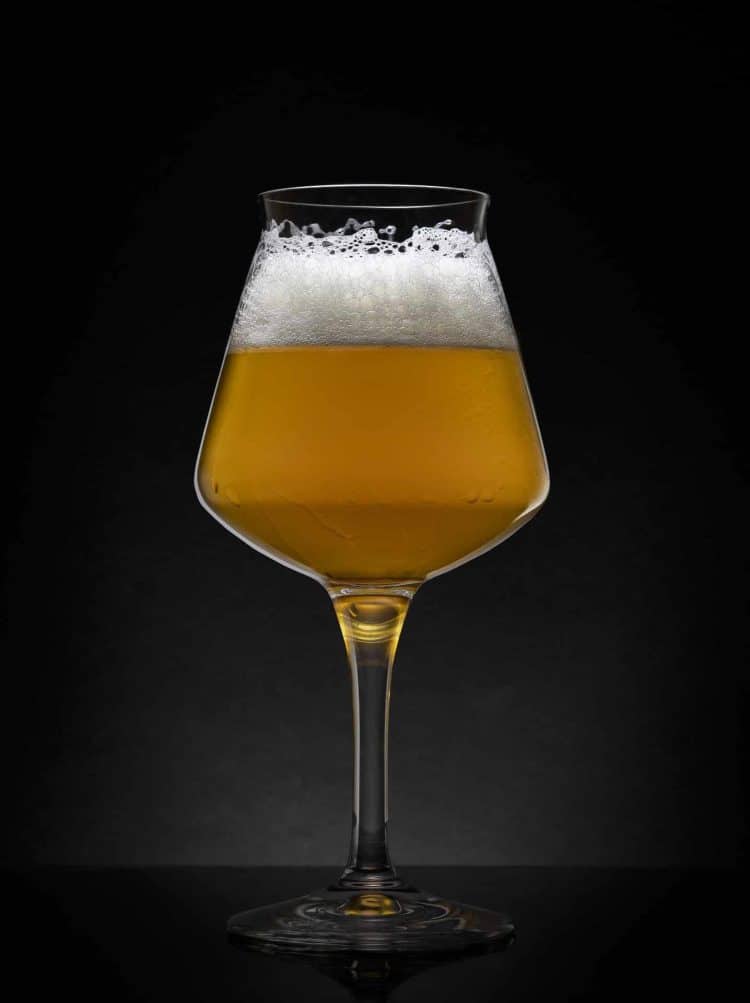Bittersweet golden froth simmers from an IPA—flowery, flavorful, fabulous. This treat comes courtesy of hops, cannabis’ talented cousin. Family feuds aside, hops may not have the market cornered. A recent study illustrates that hemp flowers make for killer aroma bouquets in liquor and beer. [1]
Hemp flower “waste” seems like a strange idea. When fiber and seed are the goal, flowers may be chucked. In this case, European researchers consider hemp essential oil (EO) a “niche, value-added product” with a “well-liked aromatic profile” and an “odour bouquet heavily [reliant] on the cultivar.”
A brewery in Pisa, Italy, created the Hempitaly beer and liqueur under investigation. The recipe calls for two fibrous hemp cultivars—Futura 75 and Uso 31—alongside a classic favorite, hop (Humulus lupus L.). It starts with base malts (88% Pilsner, 6% Vienna, 3% Weizen, and 3% Carapils) mashed with water (1:3 ratio). The brewers perform a series of temperature swings:
- 45º C for 10 minutes to nourish yeast
- 50º C for 20 minutes to convert starch into sugar (induce amylolysis)
- 62º C for 20 minutes (maximize β-amylase activity)
- 65º C for 20 minutes (synergize amylase enzymes)
- 70º C for 20 minutes (maximize α-amylase activity)
- 78º C for 5 minutes (inactivate enzyme phase)
- Cool for 15 minutes
The stew is then filtered, the threshes washed, and the wort collected for fermentation. At this point, the brewers introduce and wash fresh hemp flowers (2:1 ratio Futura 75 to Uso 31) through the threshes. They boil the wort for an hour, introducing the hop pellets and hemp flowers in the last 10 minutes. Hemp is again added during the cooling/whirlpooling phase.
Creating the liqueur is simpler. This recipe macerates hemp flowers with pure ethanol. A stainless-steel filter allows easy filtration. Then the extract is diluted with glucose syrup to an ABV of 28%.
The researchers used hydrodistillation, headspace, and gas chromatography-mass spectrometry (GC-MS) to profile the chemicals in the cultivars, hop pellets, and beverages (incl. control beer). They noted important differences:
- 19 compounds were unique to Uso 31 (e.g., sesquiterpene 9-epi-(E)-caryophyllene)
- 22 distinct compounds were detected in Futura 75 (e.g., sesquiterpene alloaromadendrene)
- Monoterpenes α-pinene, β-pinene, myrcene, and terpinolene dominated flower EOs
- In beer, hemp decreased aldehydes (fruity) and increased isopentyl acetate (sweeter and more fragrant)
- In beer, hemp nearly doubled myrcene content
- In the headspace of hemp alcohol, a-pinene and myrcene (balsamic aroma) accounted for more than 50% total composition; β-pinene (~12%) contributed a woody odor
Multivariate statistical analysis was used to calculate meaningful differences (total variance 88.8%). The researchers created headspace quadrants to compare the chemical profiles. Ultimately, adding hemp to beer did not differentiate it significantly from hops beer. Hemp liquor is in a class of its own, however, for its large quantities of hemp monoterpenes.
Nonetheless, the authors conclude, “The beer maintained its volatile aroma compounds profile, slightly enriched with more balsamic notes.” [1] Bottom’s up.
Reference
- Ascrizzi R, et al. “Hemping” the drinks: Aromatizing alcoholic beverages with a blend of Cannabis sativa flowers. Food Chemistry. 2020;325:126909. [Impact Factor: 6.306; Times Cited: 2 (Semantic Scholar)]
Image: Jan Gunnar Nygård from Pixabay











